Three-hundred-and-fifty years ago on September 2, London burned for four days just a year after the Great Plague (Black Death) plagued the city. The city and most of its buildings, including St. Paul's Cathedral, was largely destroyed by the fire. This destroyed over 130,000 homes and 84 churches and left thousands homeless considering only approximately six people (that they know about) perished.
We know a little bit about the unfolding events from Samuel Pepys and his writings in his diary. Because this year marks 350 years since the anniversary of the fire, many events are taking place to commemorate it. One of the events is a free two-hour walk around the City, which takes place all week this week at different times. I decided to join one of the walks earlier today. I know this part of the City very well as I worked near Cannon Street and Bank Station.
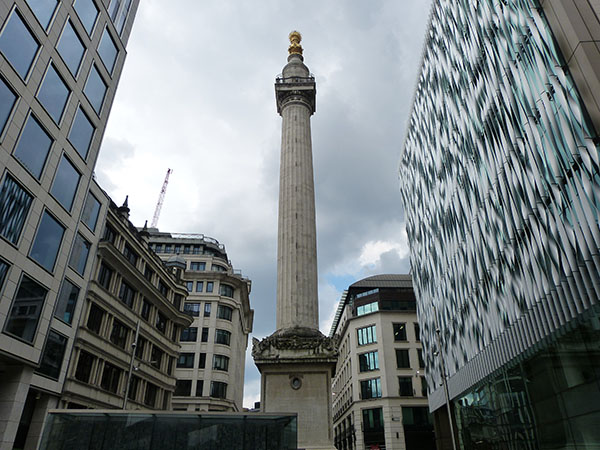
Our meeting point was Monument, the monument created after the fire as a memorial. It is a large free-standing column with a frieze on the side. The Monument can be climbed (as there is a staircase inside the column) and views can be enjoyed; I climbed Monument a few years ago and received a certificate. The location of the Monument is imporant because if it was laid down, the gold flame on top would meet the location where the great fire is said to have started.
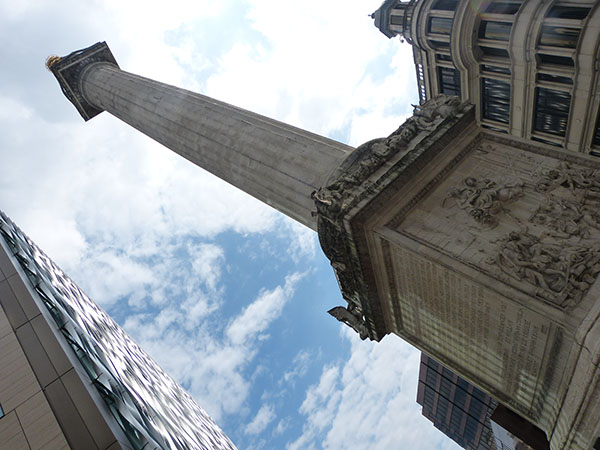
Thomas Faryner's bakery on Pudding Lane is attributed to the start of the fire and printed on maps after. He was the King's baker. It is thought that his maid forgot to put the fire in the ovens out, but something else may have set the fire off. The summer of 1666 was very hot and dry, so it may have been a spark or started by something else. We will never know. The maid was actually one of the few who is thought to have died in the fire. A plaque, gifted by the Worshipful Company of Bakers, marks the spot near where the bakery would have stood.
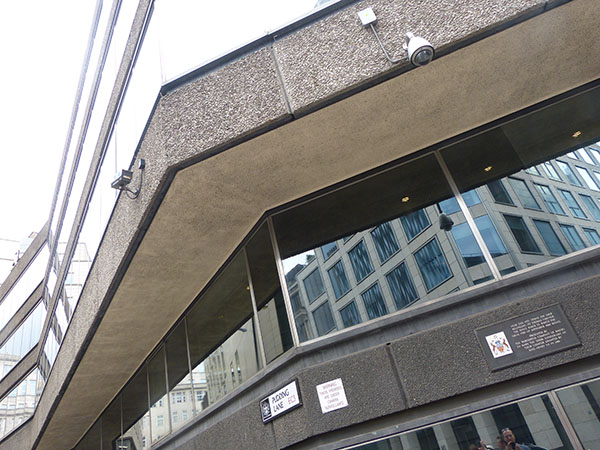
The baker and his family did manage to escape. The buildings were built so close together with some of the top floors almost joining. They managed to jump out of the window and into the neighbours house and escape.
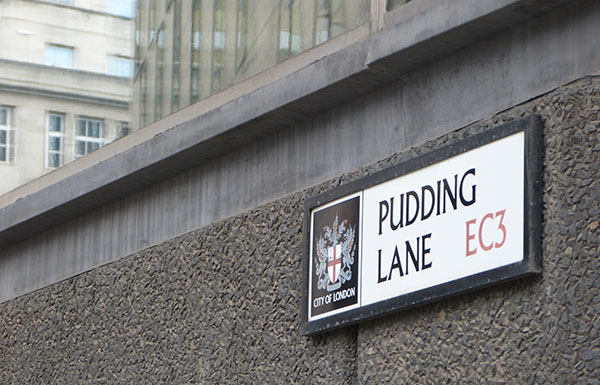
On the Monument, the frieze depicts London as a lady lying on rubble. The older figure to her left represents Father Time, and the two figures in the clouds represent peace and wealth. This means that London will rise again from the ashes. On the right side, the King and architects/scientists/other important people build the city up again.
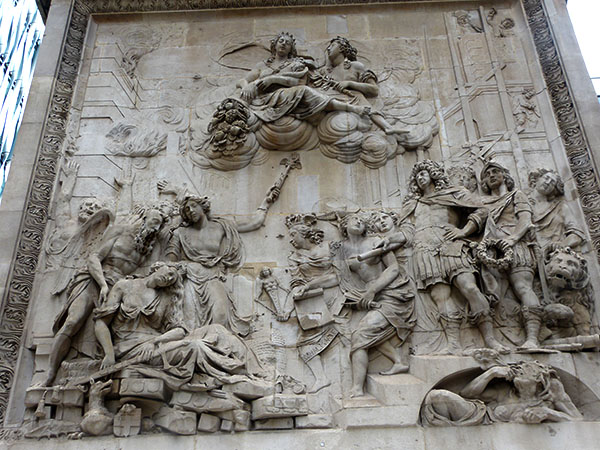
The flame on the top of Monument is plated with gold.
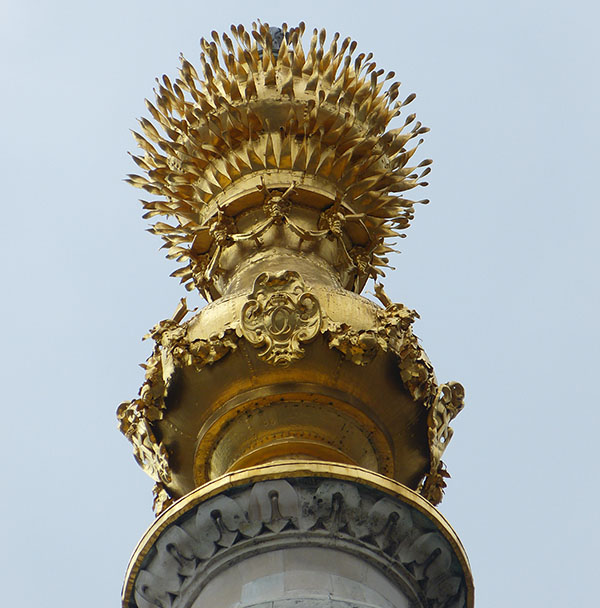
From Monument, we headed down the hill and across the road to St. Magnus-the-Martyr. Just to the right of this church was the original entrance to the old London Bridge. I have previously covered this church in a blog post, and it's worth a visit to see the model of London Bridge. The walk was meant to go inside the church to see the model, but the church was shut. You can read more about London Bridge, the model of the bridge and St. Magnus-the-Martyr here.
After the visit to the church, we walked along the Thames and got to Cannon Street Bridge where we were told about the steel yard. It was actually a place for weighing wool, not for steel. It was owned by foreigners (we were told that they were mainly Dutch, French and German), and at the time of the fire, it was thought that the fire started here and anyone with a foreign accent was to blame and some suffered violence during and after the fire.
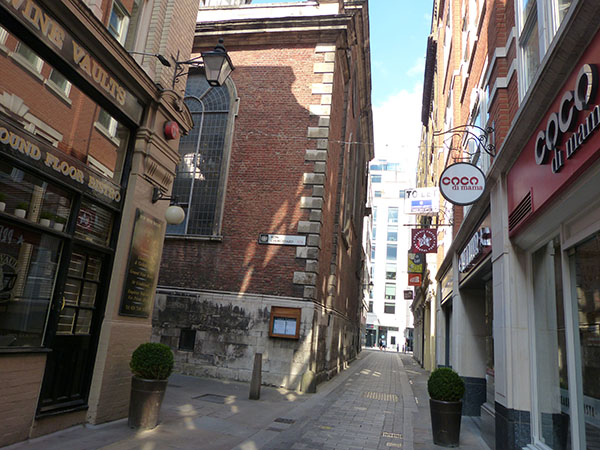
We were also read passages from Samuel Pepys' diary. In the diary, he mentions Cannon Street and Walting Street. We walked around the area where Bow Church is because these streets follow a similar footprint to the original streets from 1666.
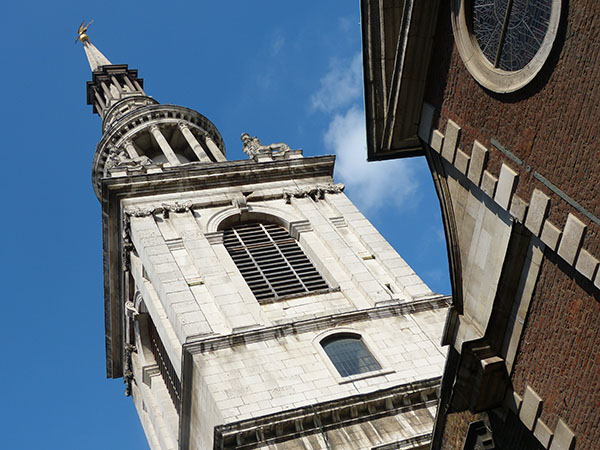
Bow Church looked lovely in the sunshine.
We then headed north across Cheapside, which was a wider street and the main shopping area. The fire managed to jump across the street here. We walked down Ironmonger Street.
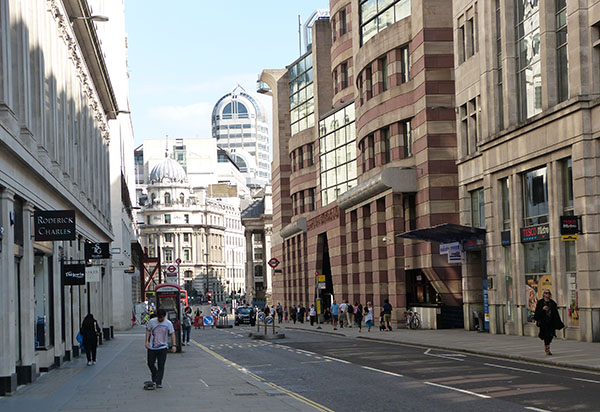
Near the Guildhall, I captured a photograph of one of the old buses.
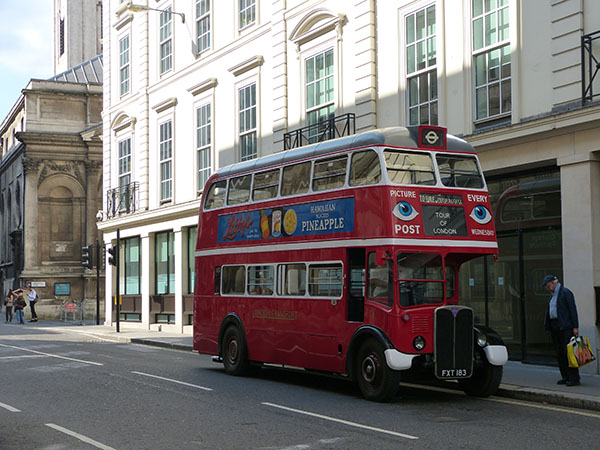
The Guildhall mostly survived the fire, but it needed a new roof. The fire did continue northward and further east and west.
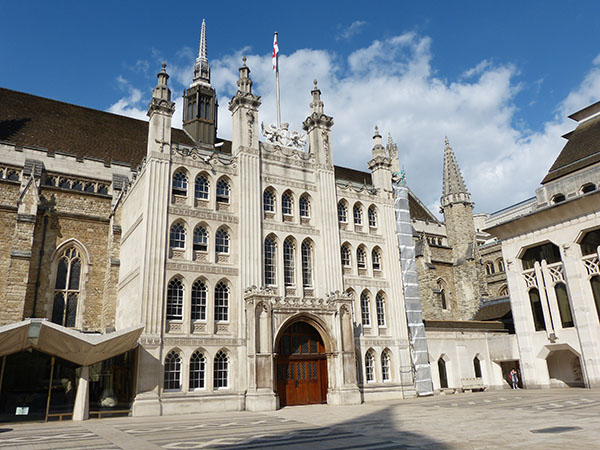
We then made our way down Gresham Street toward St. Paul's Cathedral. We stopped off at the candlemaker's livery hall, which is decorated well. Next door is the goldsmith's hall.
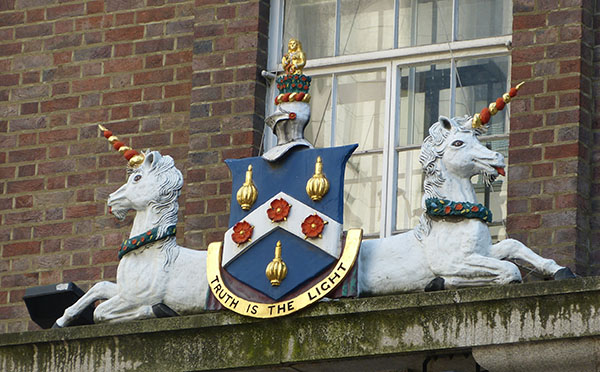
We came to St. Paul's Cathedral. The original cathedral was destroyed by the fire. Actually, many years before the fire, another fire had burnt part of the cathedral. The scaffolding remained while it was being repaired, but this caught fire and the whole cathedral and its beautiful tower was destroyed. Christopher Wren constructed this new one with the second largest dome in the world. He is buried in the crypt.
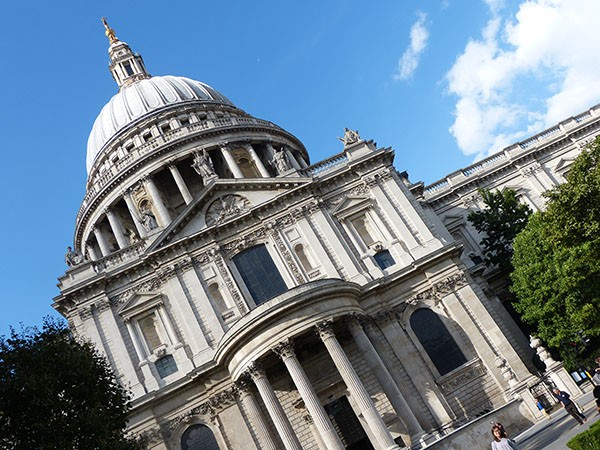
While they were clearing the burnt rubble from the original cathedral, they found the stone with the word 'resurgam' ('will rise again'). This had meaning for them, so they made a new stone with this word and a falcon rising from the ashes on top of it. Although London suffered, it did rise again from the ashes.
While the King and mayor were at a loss and not taking the situation seriously, Samuel Pepys was instrumental in coming up with a solution to tear down houses so that they would not spread fire.
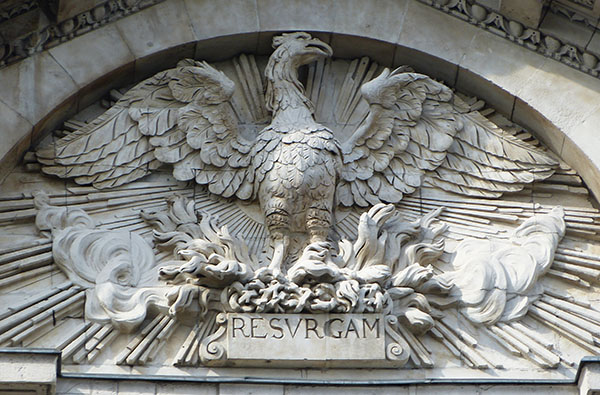
The 'Fire of London' walks take place all week this week in the lead up to the 350th anniversary of the great fire, which started on September 2. The walks are free and led by a City of London guide.
For more information about other events, visit http://www.visitlondon.com/greatfire350. Also, the Museum of London is holding an exhibition about the great fire until next spring.
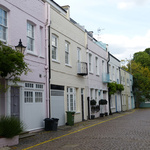
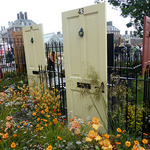
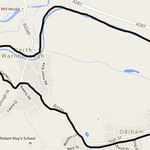
Leave a comment